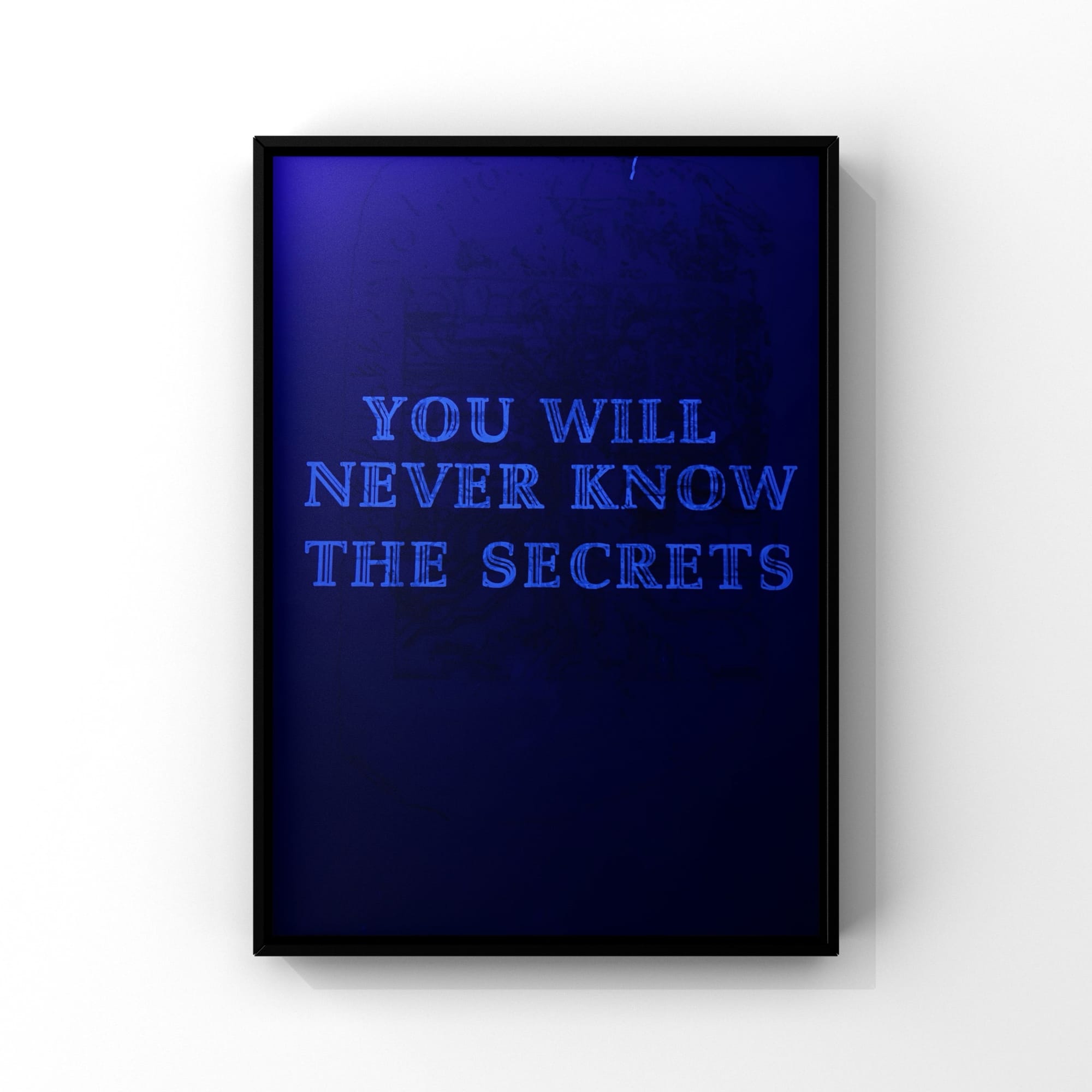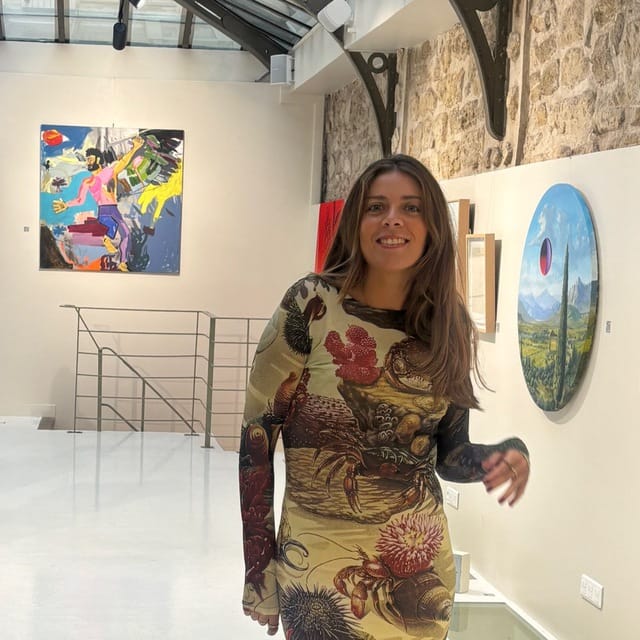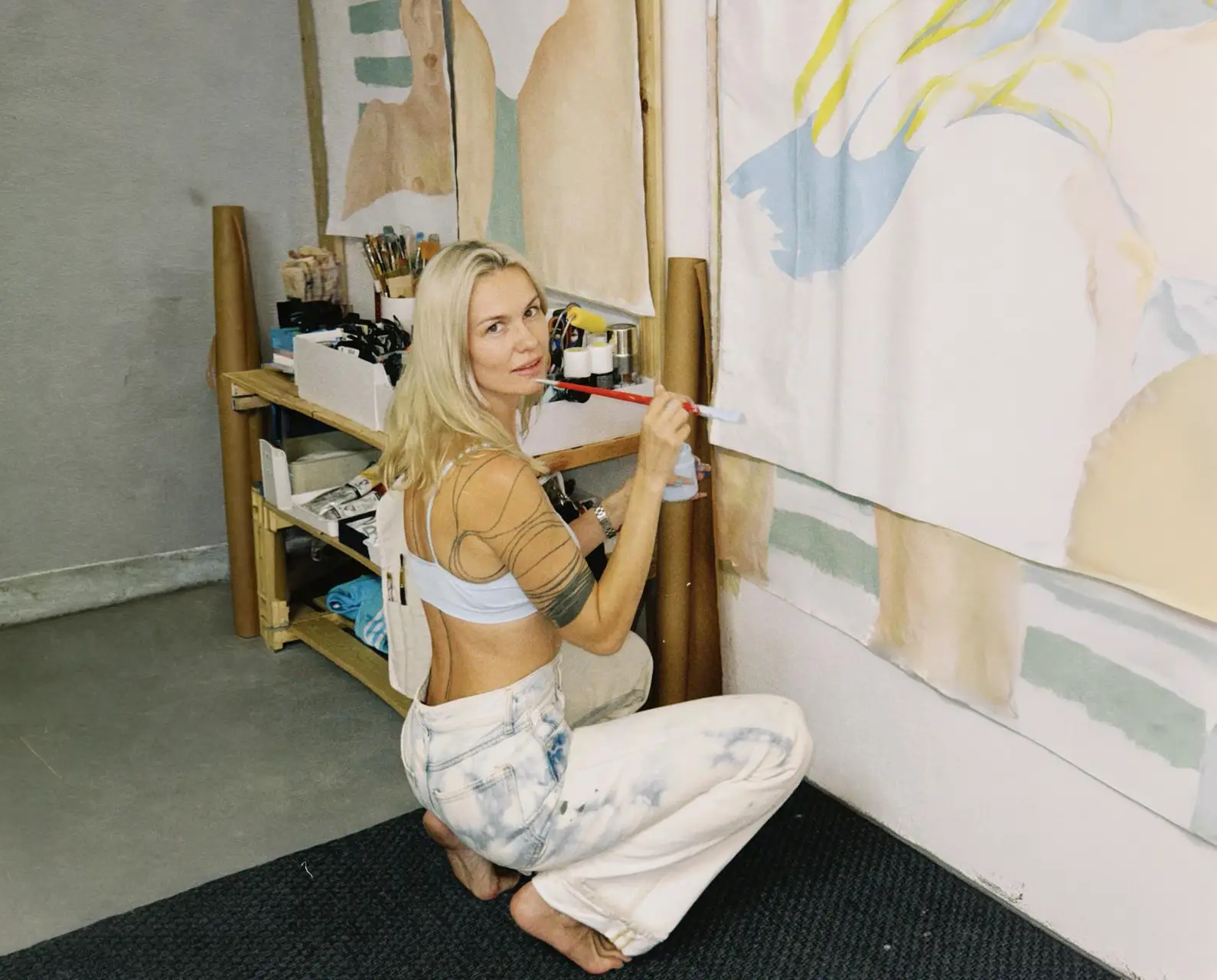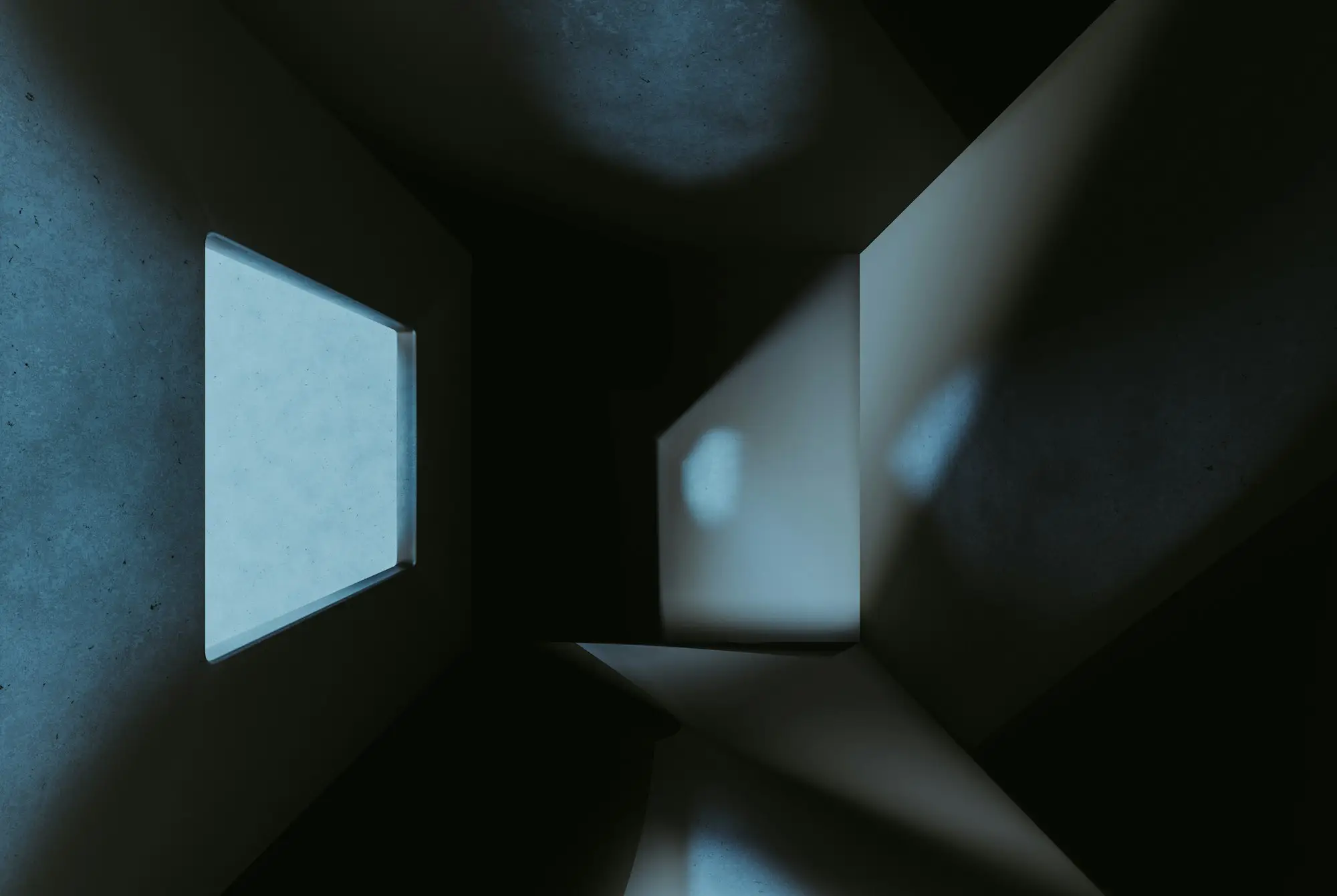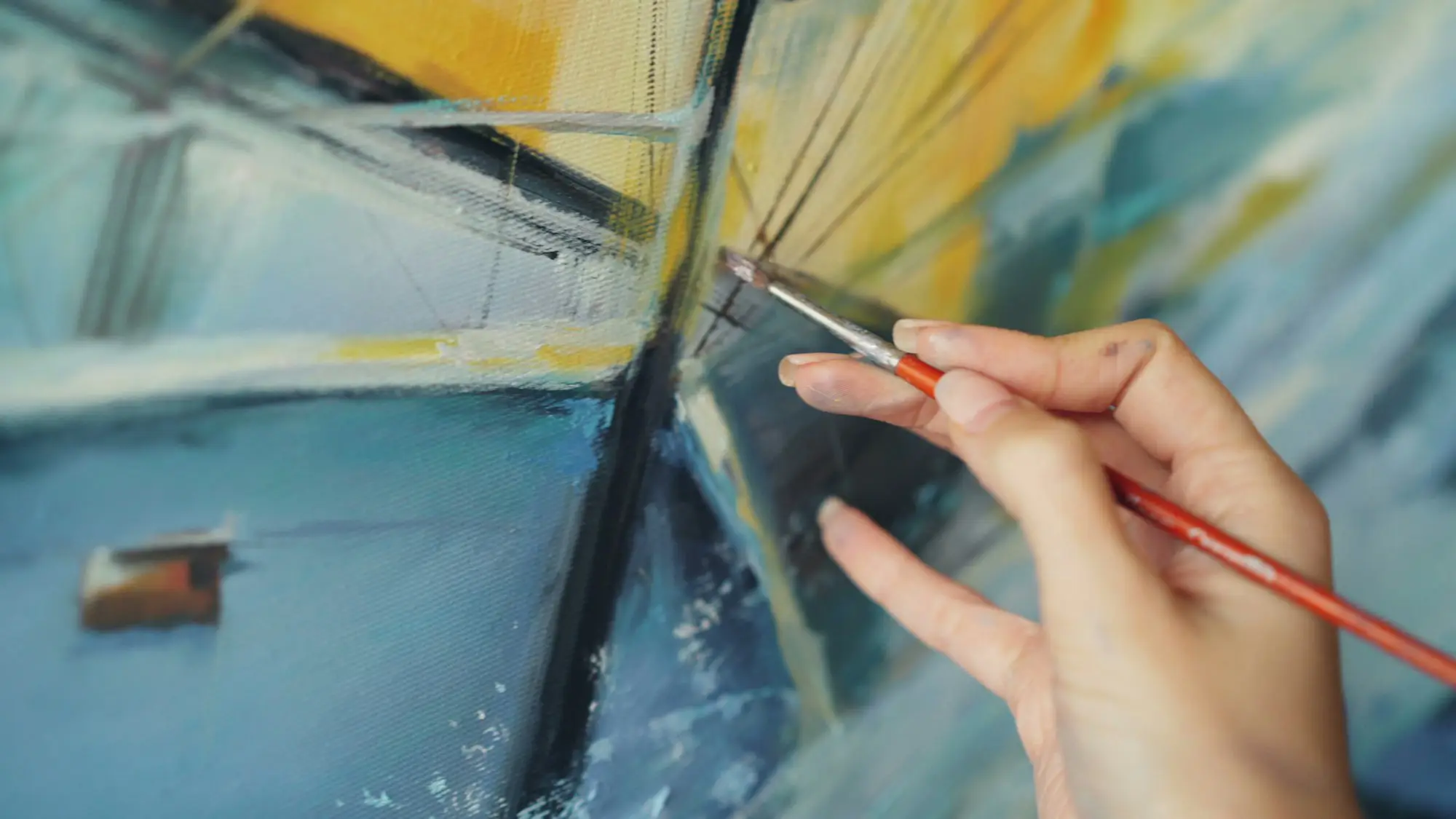Three questions to Francisco Duarte Coelho

About Francisco Duarte Coelho
Born in Santarém and based in Lisbon, Francisco Duarte Coelho is a contemporary artist whose work offers an irreverent and inventive exploration of digital ephemerality. With a background in Cinema, his practice operates at the intersection of technology, archaeology, and digital sorcery.
Beyond his artistic practice, Francisco serves as Gallery Manager of Espaço Cultural das Mercês, where he champions emerging talent within the contemporary art scene.
He is also the founder of Matéria, Material Bank for Artists, an innovative initiative that provides material resources to artists in the community—an initiative by Misericórdia Parish Council.
How did art first enter your life, and how has your cinema background shaped your approach to visual storytelling in your current work?
Art first entered my life when I was a kid, through antiques. I used to explore antique shops with my mother, we’d dig through objects and find hidden treasures. There were always lots of old paintings and objects that looked like sculptures. That sense of discovery stayed with me. It taught me to see objects not just as things, but as carriers of time, memory, and meaning.
Later, while studying cinema at university, I was living with a flatmate who studied painting at the fine arts university. I began hanging out with that crowd and even started attending some of their classes art history, especially, opened up new perspectives.
In cinema, I always worked in the art department, choosing clothes, props, designing sets, building environments. That was my way of storytelling. To do that work is to build parallel worlds, fully formed atmospheres that tell stories through materiality. That instinct continues in my current practice: I create narrative artworks that could easily be mistaken for film props. But they always have something to say about our own world. They often act as a critique or reflection of our over-technologized society. For me, storytelling happens through space, through objects, and through the layered associations they carry.
You work simultaneously as a gallery manager and artist. How do you manage these parallel practices, and do your curatorial insights influence your artistic development?
It’s definitely a balancing act, but one that feels very natural to me. I’ve actually made many more exhibitions for other artists than for myself over the years, I’ve organized and co-curated more than 200 exhibitions just at the gallery I manage. That experience has been incredibly valuable. My eyes are very well trained to read and analyze spaces, to understand how artworks can breathe, relate to each other, and engage with the architecture around them. It means that when it comes to setting up my own exhibitions, the process is usually fast and intuitive.
That curatorial experience doesn’t just help on a practical level it also shapes the way I think as an artist. I’m always thinking in terms of context, relationships, and atmosphere. I approach my own work with the same mindset I use when curating others: how does this piece function in space? What story is it telling alongside others? That dual perspective allows my work to exist not just as isolated objects, but as part of larger environments or fictional systems.
In a way, curating keeps me grounded and outward-looking. It’s a constant exchange between creating and supporting, between vision and dialogue.
Your exhibition "Techno Witchcraft Society" at Casa do Comum explores the convergence of technology, archaeology, and witchcraft through a fictional scientific society. What drove you to create this conceptual framework, and what does it reveal about our contemporary relationship with technology?
The idea for the Techno Witchcraft Society came from a long-standing impulse to build myths to imagine a speculative parallel world that exists beside our own. When I was a child, my dream job was to become an archaeologist. I wanted to dig up the treasures of the past, uncover the truth behind myths. I was always deeply fascinated by both science and magic. I had science kits for doing experiments, microscopes, telescopes, but also magic trick kits. To me, digging into the past always had something inherently magical about it. That mix of wonder, logic, and storytelling has stayed with me and shaped my imagination.
So when I started preparing this solo show, I knew I wanted to work with that sense of mystery and discovery. Around the same time, a friend came to me with a business idea. He wanted to create a kind of ladies’ and gentlemen’s club in Lisbon, and he invited me to be part of it. We started shaping the concept together, but eventually neither of us had the time to make it happen. Still, the idea of a private society a group of people united by shared values or curiosities stayed with me. I ended up channeling that energy into the exhibition, creating a fictional scientific society dedicated to studying the relation between magic and technology.
Through this lens, I could treat motherboards like sacred texts, plastic remnants like archaeological totems. These objects look like movie props, but they’re asking real questions: What do we worship now? What gets preserved and what gets forgotten?
In a world that feels increasingly abstract and digital, I wanted to make something tactile something that could bring back a sense of enchantment, while also inviting critique. The Techno Witchcraft Society reflects how overwhelmed we are by invisible infrastructures, and how easily we place blind faith in technologies we don’t fully understand. Time always transform magic into science. The project asks whether we’ve lost touch with mystery in our pursuit of control and whether fiction might be a way to reclaim it.
Our top selection of Francisco's works

